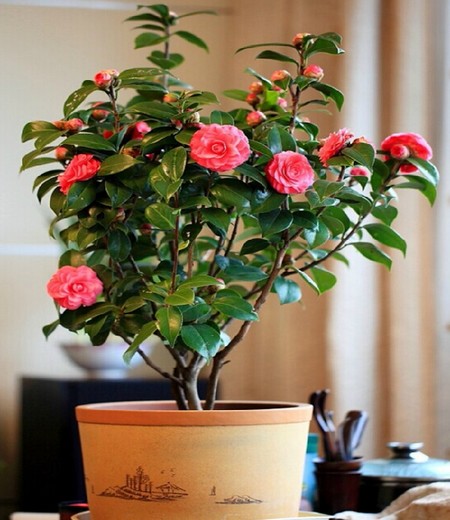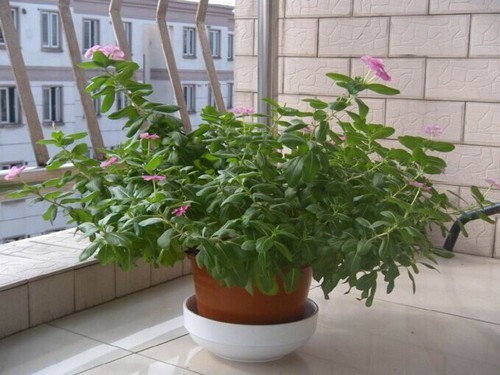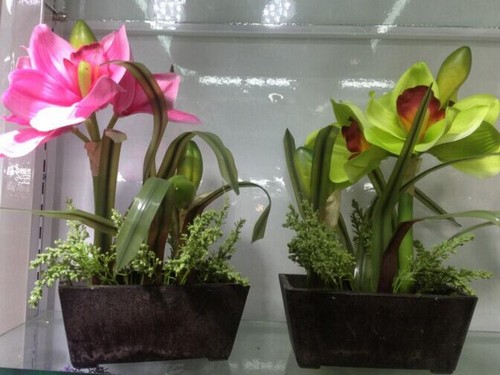Planting method of hibiscus flower
Hibiscus is a traditional famous flower in China, which has been cultivated for nearly 3000 years. Hibiscus is a common deciduous shrub or small tree with strong adaptability. It is suitable for planting in north and south. It is semi-shade-tolerant, cold-resistant and semi-drought-tolerant. It usually grows well in moist soil. Strong germination, resistance to pruning, strong resistance to smoke, sulfur dioxide, chlorine and so on, but also has the function of detaining dust. At the same time, hibiscus flower has the effect of clearing heat and detoxification, cooling blood and reducing swelling.

Hibiscus is often propagated by cuttage, and the cutting time is mostly before the sprouting of new leaves in early spring, but also in some areas in the rainy season and the end of autumn and the beginning of winter. Fertilizing before planting, perennial branches are generally used as cuttings, the length is generally 10-12cm, the height of cuttings is about 2 15cm, and the plant spacing is 10-15cm. After planting, the soil is compacted, watered in time, and fertilized once every 3 months. The survival rate of cuttings is generally more than 85%.
Growth characteristics
Like light, warm and humid climate, tolerance to semi-shade, resistance to dry and barren soil, resistance to pruning, resistance to smoke and dust and harmful gases.
Cultivation techniques
1. Methods of reproduction
The main results are as follows: (1) about 15 cm branches can be used for cutting in spring, and the survival rate is higher, and it can also be propagated by striping in March.
(2) suitable plants can be selected for split propagation in autumn.
The method of cutting is commonly used to propagate hibiscus. The specific method of cutting is as follows: in March in spring, before the branches of hibiscus sprout, the sturdy branches of 1 to 2 years old are selected as cuttings, cut into segments of 15-17 cm, and inserted into the seedbed with a depth of 10-12 cm, with a row spacing of 20 cm × 50 cm. The nursery bed should be ploughed, raked and leveled in advance, and immediately irrigated after cutting, and an arched bamboo strip is inserted on the seedling bed every 50 cm, and then covered with plastic film to achieve the effect of heat preservation and moisturization. It can take root and sprout after more than a month, and the general survival rate is more than 90%. Summer and autumn cuttings do not need to be covered with plastic film, pay attention to watering, moisturizing shade.
2. Cultivation and management
The management of hibiscus is relatively extensive, pay attention to watering in spring, summer and dry season, fertilize properly during the growing period, hibiscus flowers bloom luxuriantly, old beads can be cut off 15cm or 20cm from the ground, new branches can germinate and continue to blossom, and over-dense plants should be properly pruned for ventilation and light.
Hibiscus like light, water, warm and humid climate, but also slightly resistant to semi-shade, do not choose soil, easy to manage. During the period from spring germination to summer flowering, hibiscus can be irrigated once or twice to promote exuberant growth. Hibiscus is resistant to pruning. After falling leaves in autumn or before sprouting in spring, dry and withered branches, diseased branches, weak branches and insect branches should be cut off to facilitate the renewal of branches.
3. Pest control
There are not many diseases and insect pests in hibiscus, such as anthracnose, leaf blight, powdery mildew and so on. Germicidal pesticides such as chlorothalonil and mancozeb are sprayed against this kind of fungus; pests are mainly red spiders, aphids, coir moths, nocturnal moths, longicorn beetles, etc.; generally, the branches of diseases and insect pests are pruned first, and then sprayed with pesticides, trichlorfon and omethoate are often used.
Time: 2019-05-25 Click:
- Prev

Planting and cultivation techniques of Bauhinia
The bauhinia tree is tall, the first leaves bloom, showing purplish red, shaped like a butterfly, covered with branches, in full bloom in summer, cultivated and ornamental, it is enjoyable. Su Songyun: there are bauhinia everywhere, there are many kinds of people in the courtyard, the wood is like bauhinia, the leaves are small and the flowers are dark purple and lovely. The flower of a deciduous tree or small shrub of the Leguminosae family.
- Next

Cultivation and Propagation of Magnolia
Magnolia is a traditional flower of our country. Beautiful seedlings crown, flowers big and fragrant, early spring leaves bloom, full seedlings are, crystal clear such as jade, delicate fragrance like orchid. Garden whether in front of the window, house corner, roadside, rock edge can be planted alone or in groups; large gardens can be built Yulan special garden, when flowering jade seedlings forest, endless flowers
Related
- Fuxing push coffee new agricultural production and marketing class: lack of small-scale processing plants
- Jujube rice field leisure farm deep ploughing Yilan for five years to create a space for organic food and play
- Nongyu Farm-A trial of organic papaya for brave women with advanced technology
- Four points for attention in the prevention and control of diseases and insect pests of edible fungi
- How to add nutrient solution to Edible Fungi
- Is there any good way to control edible fungus mites?
- Open Inoculation Technology of Edible Fungi
- Is there any clever way to use fertilizer for edible fungus in winter?
- What agents are used to kill the pathogens of edible fungi in the mushroom shed?
- Rapid drying of Edible Fungi

